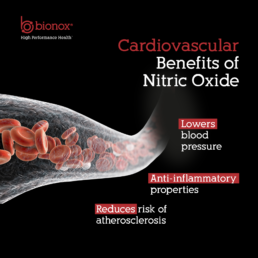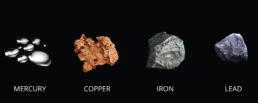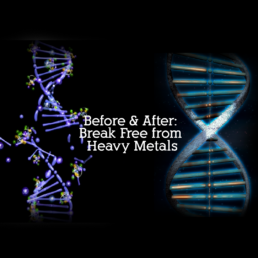Debunking the Myth: Does L-Arginine Work?
Does L-Arginine Work?
In the world of health supplements and nitric oxide products, few amino acids have garnered as much attention as L-Arginine, particularly for its role in producing nitric oxide (NO), a molecule vital for vascular health.
However, as with many popular supplements, L-Arginine has seen its fair share of detractors. Some companies, possibly driven by motives to promote their own products or strategies, claim that L-Arginine does not work. Let’s dive into these assertions, understand their basis, and examine the broader picture.
Does L-Arginine Work? Why Do Some Claim L-Arginine Doesn’t Work?
- Selective Interpretation of Research: Some of the most vocal criticisms stem from some studies suggesting that L-Arginine supplementation may not always result in improved NO production, especially in those with compromised endothelial function. These very limited studies sometimes conclude that the Nitric Oxide Synthase (NOS) enzyme, responsible for converting L-Arginine to NO, might not operate efficiently in everyone. It is important to keep in mind there are almost 100,000 studies showing arginine roles in promoting health and supporting nitric oxide. Yet only a handful of studies show no effects or negative effects.
- Marketing Motives: It’s no secret that the health industry is competitive. Companies vying for a larger market share of the NO-boosting segment might downplay the benefits of L-Arginine to promote alternative products, like beetroot extracts. Everyone is looking for a unique angle and message; the goal is to sell you their unique product.
- Misunderstanding of Mechanisms: The process of NO production is complex. It’s not just about consuming L-Arginine; other factors like oxidative stress, the presence of heavy metals, and overall health can impact the efficiency of the NOS enzyme.

Why L-Arginine DOES Work: Looking Beyond the Myths
- Overwhelming Positive Research: While there are a few studies pointing to the limitations of L-Arginine, there are thousands more that highlight its benefits. A vast body of research has showcased the efficacy of L-Arginine in boosting nitric oxide levels, supporting cardiovascular health, aiding muscle growth, and so much more!
- Understanding the Body’s Complexity: The body is not a one-size-fits-all mechanism. Just because L-Arginine might not work for a specific subset of people under particular conditions does not render it ineffective for everyone. Individual biochemistry, diet, lifestyle, and even genetics can influence how one responds to L-Arginine supplementation.
- Supporting Ingredients and Strategies: Often, the effectiveness of L-Arginine can be enhanced when combined with other supporting ingredients. For instance, antioxidants can mitigate oxidative stress, improving the environment in which the NOS enzyme functions. Similarly, detoxification agents can remove heavy metals that might hinder NO production. Vitamin D plays a huge role in nitric oxide production as well.
Understanding the NOS Pathway and the Logic of Detoxification Over Beet Supplementation
The Nitric Oxide Synthase (NOS) pathway is crucial in nitric oxide (NO) production. As we age, it’s believed, as mentioned above, that the efficiency of the NOS pathway diminishes, potentially leading to a reduction in NO production. In light of this fact for many, two primary strategies are often proposed: direct nitrate supplementation through beetroot products and detoxification of the NOS pathway.
Let’s explore why detoxifying the NOS pathway might be a more logical approach and why fixing the problem is better than just using what works under a broken system.
1. Addressing the Root Cause vs. Symptom Treatment:
- Beetroot Approach: Beets are veggies that are rich in dietary nitrates, which the body can convert into nitric oxide through a different pathway, bypassing the NOS enzyme. This is a direct supplementation approach. While it can raise NO levels, it does not address the inherent dysfunction within the NOS pathway. Thus, the root cause of the diminished NO production due to a compromised NOS pathway remains unaddressed.
- Detoxification Approach: By focusing on detoxifying the NOS pathway, you can restore its original function. Over time, various factors such as oxidative stress, accumulation of heavy metals, and other toxins can impair the NOS pathway. Detoxifying can potentially remove these hindrances, allowing the NOS enzyme to function optimally. Why not restore your body’s ability to convert arginine into nitric oxide? It makes so much more sense to treat the entire system and not just bypass it.
2. Comprehensive Health Benefits of Detoxification:
Beyond just improving the NOS pathway, detoxification offers many health benefits. It can lead to increased energy, improved cognitive function, reduced risk of chronic diseases, and an immune system boost. In contrast, while beet supplementation boosts NO levels, it might not offer these broader health benefits associated with detoxification.
3. Variability in Response to Beets:
Not everyone may benefit equally from beet supplementation. Factors such as gut flora composition and oral hygiene can influence the conversion of dietary nitrates from beets to NO. On the other hand, detoxifying the NOS pathway could possibly provide more consistent benefits across different types of individuals, as the emphasis is on enhancing a natural physiological process.
4. Long-Term Sustainability:
Detoxification can lead to sustainable improvements in the NOS pathway, potentially providing you with longer-lasting benefits. Conversely, the effects of beet supplementation are often transient in nature. Once supplementation stops, the boosted NO levels might decline, especially if a person’s NOS pathway remains compromised.
In Conclusion
Does L-Arginine Work? Yes, it certainly does and has been shown to work repeatedly in study after study. While beetroot supplementation can certainly be a part of your personal strategy to boost your nitric oxide levels, especially if you have significant NOS impairment, it’s essential to recognize the potential limitations of beetroot and nitrates. Detoxifying and revitalizing the NOS pathway addresses the issue at its core, aiming to restore the body’s natural ability to produce nitric oxide. This holistic approach boosts NO levels and improves overall well-being and long-term health.
Can Chelation Clear Arteries? A Look into Chelanox and Chelation Therapy
Can chelation clear arteries? Heart health has long been at the forefront of today’s medical research. With an increasing number of individuals affected by cardiovascular diseases, there’s a growing interest in exploring alternative treatments. With one in four people dying from cardiovascular ailments, it’s no wonder.
One alternative treatment method that has gained attention over the years is chelation therapy. In this article, we will delve into the question: can chelation clear arteries? And where does Chelanox ( made by Bionox) fit into the equation?
What is Chelation Therapy?
Chelation therapy involves the administration of chelating agents to remove heavy metals and toxins from the body1. The most commonly used agent for this therapy is EDTA (ethylene diamine tetraacetic acid), which binds to metals like lead, mercury, copper, iron, and calcium, just to name a few.

Can Chelation Clear Arteries?
Several studies have explored the potential of chelation therapy in treating cardiovascular diseases and related issues. One such study, the Trial to Assess Chelation Therapy (TACT), found that chelation therapy could reduce cardiovascular events in patients with a history of heart attacks2. The study theorized that removing metals might help reduce oxidative stress, which plays a role in atherosclerosis.
The Role of Inflammation in Cardiovascular Diseases – How Chelanox Can Make a Difference
Inflammation is the body’s natural response to injury or infection, but when it becomes chronic, it can contribute to the development and progression of numerous diseases, including cardiovascular diseases (CVD). In this article, we will delve into the intricate relationship between inflammation, oxidative stress, and cardiovascular health, and how Chelanox can be instrumental in this equation.
Inflammation and Cardiovascular Diseases
Cardiovascular diseases can encompass a wide range of conditions affecting the heart and blood vessels, brain, lungs, and more. A large body of research has consistently linked chronic inflammation to the development of atherosclerosis, a condition where plaque builds up in the arteries, leading to heart attacks and strokes3.
Certain inflammatory markers, such as C-reactive protein (CRP), have been identified as predictors of cardiovascular events like heart attacks. Elevated levels of these markers suggest an ongoing inflammatory response that can damage arterial walls, making them more prone to plaque accumulation.
Oxidative Stress and Inflammation
Oxidative stress arises when there’s an imbalance between free radicals (unstable molecules that can damage your cells) and the body’s ability to counteract or detoxify their harmful effects. This imbalance can trigger inflammation. For instance, oxidized low-density lipoprotein (LDL) cholesterol is known to initiate an inflammatory cascade leading to the formation of atherosclerotic plaques2.
Reducing oxidative stress can, therefore, dampen inflammatory responses. Minimizing the cellular damage caused by free radicals can mitigate the inflammatory pathways contributing to cardiovascular diseases.
How Chelanox Addresses These Concerns
Chelanox, with its specially formulated ingredients, addresses inflammation and oxidative stress in several ways:
- Heavy Metal Detoxification: Heavy metals like lead and mercury can contribute to oxidative stress. By binding to and facilitating the removal of these metals, Chelanox reduces one of the sources of oxidative stress. With less toxic load, your body can respond to and heal better, quicker, and fuller.
- Boosting Nitric Oxide (NO) Production: Nitric oxide plays a crucial role in vascular health by promoting vasodilation (widening of blood vessels), improving blood flow, and reducing blood pressure4. A compromised nitric oxide synthase (NOS) pathway can lead to reduced NO production, contributing to endothelial dysfunction and inflammation. Chelanox supports the NOS pathway, enhancing NO production.
- Strengthening the Immune System: A healthy immune system can better regulate inflammatory responses. Some ingredients in Chelanox, such as NAC and antioxidants, support immune function, helping the body to respond appropriately to threats without tipping into chronic inflammation.

Let’s delve into each ingredient in Chelanox, focusing on their potential roles in combating oxidative stress and supporting chelation.
1. EDTA (Ethylenediaminetetraacetic Acid):
- Fights Oxidative Stress: EDTA can neutralize metal-induced oxidation by binding to metal ions.
- Supports Chelation: EDTA is a well-known chelating agent, particularly used for lead, calcium, and other heavy metal removal from the bloodstream.
We use acid-resistant capsules to ensure maximum EDTA absorption. This is very important to note!
2. Chlorella Algae:
- Fights Oxidative Stress: Chlorella contains antioxidants like chlorophyll, beta-carotene, and lutein.
- Supports Chelation: The cell wall of chlorella has been shown to bind with heavy metals and pesticides, facilitating their elimination. If you eat fruits, veggies, or grains, you probably have consumed high levels of pesticides and heavy metals.
3. Modified Citrus Pectin (MCP):
- Fights Oxidative Stress: MCP has antioxidant properties that may help combat oxidative stress.
- Supports Chelation: MCP has been found to reduce the body burden of certain heavy metals, including lead and mercury.
4. Cilantro Leaf Extract 4:1:
- Fights Oxidative Stress: Cilantro is rich in antioxidants that can neutralize free radicals.
- Supports Chelation: Some studies have suggested cilantro can facilitate the excretion of heavy metals like mercury.
5. Shilajit 10:1 Extract:
- Fights Oxidative Stress: Shilajit is rich in fulvic acid and other antioxidants.
- Supports Chelation: While direct chelation hasn’t been widely studied, Shilajit may help enhance the efficacy of other chelating agents.
6. Zeolite:
- Fights Oxidative Stress: Zeolites can help counteract free radicals.
- Supports Chelation: Zeolites have a cage-like structure that can trap and remove toxins, including heavy metals, from the body.
7. Glutathione Precursor Support Blend (Glutamic Acid, Cysteine, Glycine):
- Fights Oxidative Stress: This blend supports the synthesis of glutathione, a primary antioxidant in the body.
- Supports Chelation: Elevated glutathione levels can enhance the body’s ability to detoxify certain heavy metals.
8. Alpha Lipoic Acid (ALA):
- Fights Oxidative Stress: ALA can regenerate other antioxidants like vitamin C and vitamin E.
- Supports Chelation: ALA has been suggested to help remove certain metals, especially when used alongside other chelators.
9. Uva Ursi Leaf Powder:
- Fights Oxidative Stress: Contains arbutin, which has antioxidant properties.
- Supports Chelation: Not primarily known for chelation but may support overall detoxification processes.
10. Milk Thistle Seed Powder:
- Fights Oxidative Stress: Contains silymarin, which is an antioxidant and helps protect the liver.
- Supports Chelation: Milk thistle supports liver function, and a healthy liver plays a crucial role in detoxification.
- “What is Chelation Therapy?”. Mayo Clinic. https://www.mayoclinic.org/tests-procedures/chelation-therapy/about/pac-20394850 ↩
- Lamas GA, et al. “Effect of disodium EDTA chelation regimen on cardiovascular events in patients with previous myocardial infarction”. Circulation: Cardiovascular Quality and Outcomes. 2013. ↩
- Anderson TJ, et al. “The role of chelation in the treatment of other cardiovascular conditions”. American Heart Journal. 2014. ↩
- Libby, P. “Inflammation in atherosclerosis.” Nature, 2002. https://www.nature.com/articles/420868a ↩
- Madamanchi NR, Vendrov A, Runge MS. “Oxidative stress and vascular disease.” Arterioscler Thromb Vasc Biol, 2005. https://www.ahajournals.org/doi/full/10.1161/01.ATV.0000150649.39934.13 ↩
- Förstermann, U, & Münzel, T. “Endothelial nitric oxide synthase in vascular disease: from marvel to menace.” Circulation, 2006. https://www.ahajournals.org/doi/full/10.1161/CIRCULATIONAHA.105.602532 ↩
Remove Dental Amalgams The Safe Way
How to Safely Remove Dental Amalgams: A Comprehensive Guide
Dental amalgams, more commonly known as “silver fillings,” have long been debated due to their mercury content in medical and dental communities. If you’re contemplating removing your amalgams, it’s vital to ensure the procedure is done safely and by a qualified professional. Moreover, post-procedure detoxification can further safeguard your health. Here’s a step-by-step guide on how to proceed.
1. Understanding the Need To Remove Dental Amalgams:
Firstly, it’s important to understand why you might want your amalgams removed. Many individuals choose to do so due to concerns about mercury exposure, while others may be driven by aesthetic considerations or dental issues.
Dental fillings, particularly amalgam fillings, have been the subject of extensive research and discussion due to their potential effects on human health. Dental amalgams contain mercury, which can release mercury vapor. Inhalation of mercury vapors can have harmful effects over time. Other types of fillings, such as composite resins, porcelain, or gold, have their own concerns, albeit less controversial than amalgams.
Here are some studies and their findings regarding the health effects of dental fillings and materials and why you may want to remove dental amalgams:
- Dental Amalgam and Mercury Exposure:
- Summary: This study investigates the potential neurotoxic effects of mercury exposure from dental amalgam fillings. Some evidence suggests that prolonged exposure to low levels of mercury can have neurotoxic effects, especially in children and pregnant women.
- Link: Bellinger DC, et al. (2006). Neuropsychological and renal effects of dental amalgam in children: a randomized clinical trial. JAMA.
- Composite Resins and Bisphenol A (BPA) Release:
- Summary: Composite fillings can sometimes release small amounts of bisphenol A (BPA), a chemical with potential endocrine-disrupting properties. This study evaluates the potential risks of BPA release from dental resins.
- Link: Fleisch AF, et al. (2010). Bisphenol A and related compounds in dental materials. Pediatrics.
- Dental Amalgam and Neurological Effects:
- Summary: A comprehensive review of multiple studies examining the potential neurological effects, including mood disorders, cognitive impairments, and others, linked to dental amalgam fillings.
- Link: Bernhoft RA. (2012). Mercury toxicity and treatment: a review of the literature. J Environ Public Health.
2. Choosing the Right Dentist:
Selecting the ideal dentist is crucial when it comes to amalgam removal.
- Credentials Matter: Look for a dentist trained in safe amalgam removal. Organizations like the International Academy of Oral Medicine and Toxicology (IAOMT) offer certifications in this area.
- Safety Protocols: The right dentist should employ stringent safety measures. This includes using rubber dams to prevent mercury particles from being ingested, specialized air filtration systems, and protective wear for both the patient and dental staff.
- Personal Recommendations: Sometimes, word-of-mouth references can be invaluable. Ask friends or family if they’ve had a positive experience with a particular dentist during amalgam removal.
3. The Removal Process:
Once you’ve settled on a dentist, it’s time to understand the procedure.
- Step-by-Step Removal: A trained dentist will often remove the amalgam in chunks rather than drilling it out in a way that generates a lot of heat and vapor, minimizing mercury exposure.
- Use of Additional Barriers: Beyond the rubber dam, some practitioners might use saliva ejectors and even external oxygen sources, ensuring you aren’t inhaling mercury vapors during the procedure.
4. Detoxification After Amalgam Removal:
Post-removal, some individuals opt for detoxification strategies to rid their bodies of any residual mercury. One popular option is Chelanox.
- How Chelanox Works: Chelanox is believed to chelate, or bind to, mercury, facilitating its removal from the body. This can be especially beneficial after amalgam removal, even with the most careful procedures.
- Administration: A healthcare professional typically advises on the correct dosage and regimen. It’s essential to adhere to these guidelines for optimum results and safety.
- Monitoring: Like any detoxification process, monitoring your body’s response is crucial. Regular check-ups and consultations with your healthcare provider can ensure you’re on the right track.
In Conclusion:
While dental amalgam removal might seem daunting, the process can be both safe and beneficial with the right preparation and post-care. Whether driven by health concerns or other reasons, always ensure you make informed decisions and work with qualified professionals. Remember, your health is paramount; every step should reflect the best care and attention possible.


